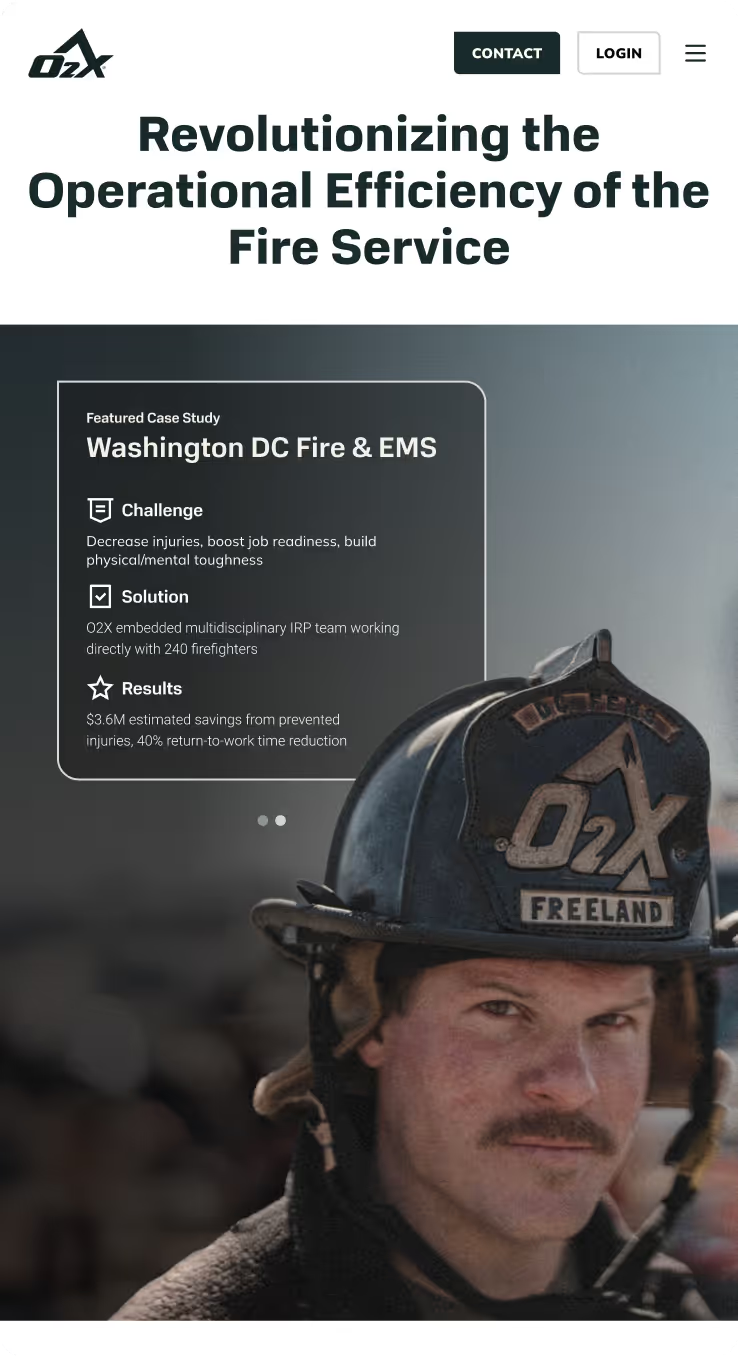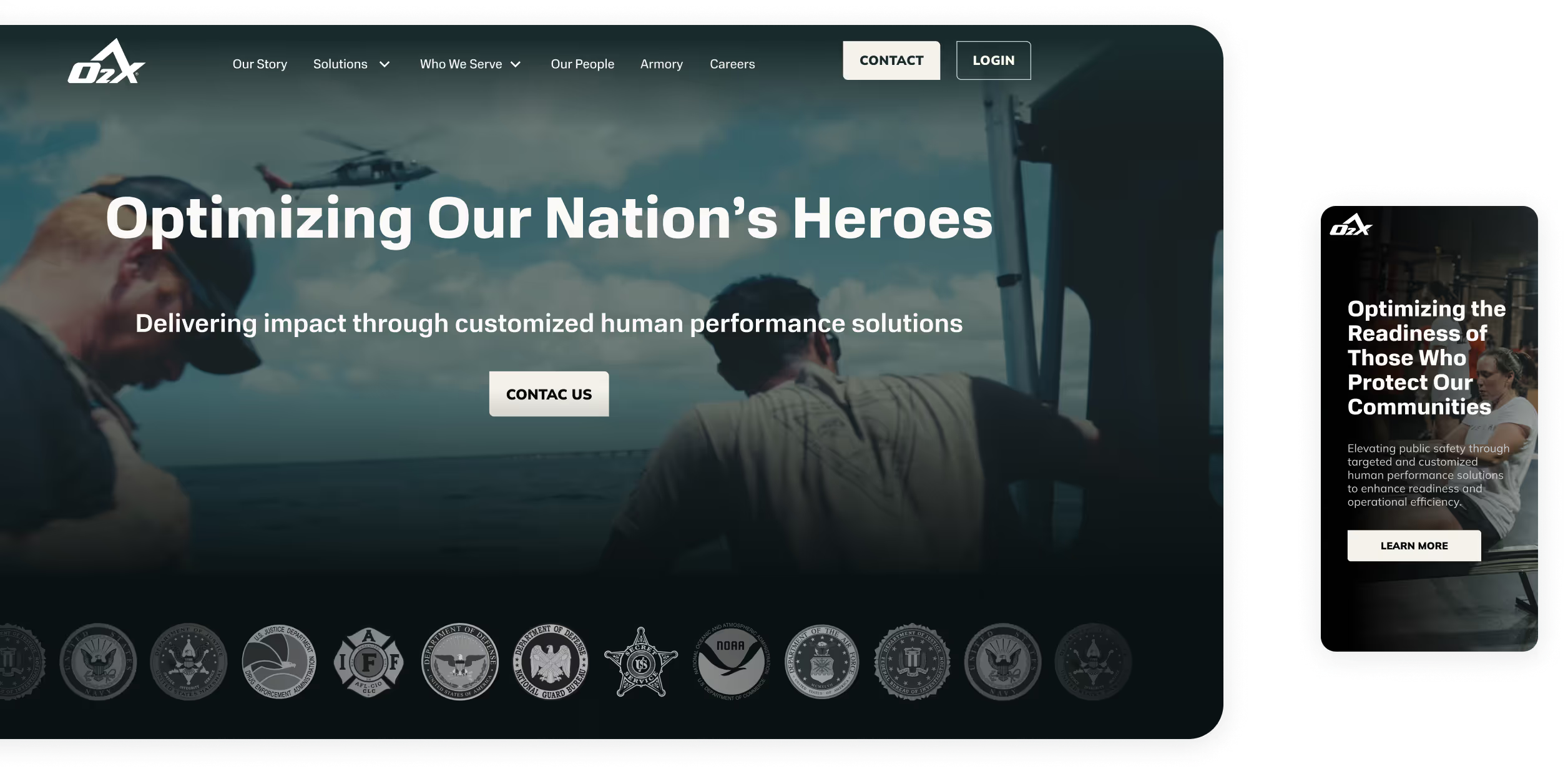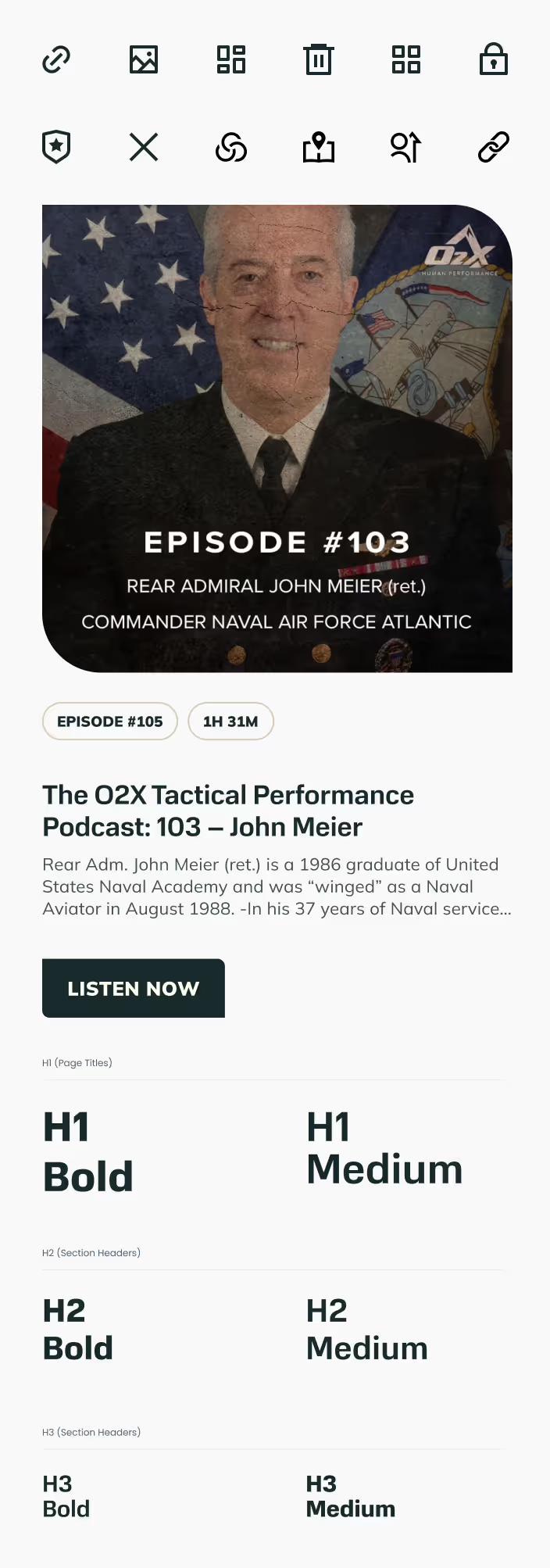Despite the pressure of limited resources in this project I was encouraging myself and the team to provide several options for the custom sections. It turned out to be not only a great exercise for creativity but built a variety to choose from for the client.
Apart from the catchy visual appearance we achieved through iterative work with stakeholders, for me O2X was not primarily about creative breakthroughs or surprising visuals — it was about adapting processes, improving client collaboration, managing the design team, and, of course, working closely with engineers.
Still, choosing the right UI approaches definitely helped us meet the client’s goals. For example, one of my key suggestions was not just to use a mega menu, but to integrate CTA blocks into specific sections to further draw user attention. Small details, such as adding mini-descriptions to each menu section, helped educate potential clients and organically tell the story of the O2X product.
One of the most important parts of the project was establishing seamless collaboration with the client. Among other things, I helped them with technical questions.
For example, we figured out how to start working with Figma and provide quick feedback. To make it easier, I even conducted a couple of personal workshops on this topic.
I should probably mention that one of my favorite personal traits is my impatience with waiting. I’d always rather have a quick 10-minute call — where I can share my screen, explain things directly, and answer urgent questions — than send one email with instructions, follow up 15 times, and still wait for the issue to resolve itself.
I definitely like to think of myself as an action-oriented person.

Elements of the design system
Low adaptability of the design:
→ establishing a Design System that is easy to build in Webflow
→ integration of the responsive components}
→ adding custom UX and UI hooks for the better conversions
Successful collaboration:
→ mentoring sessions for me to learn more about management
→ scheduling and holding technical workshops for the client
→ using comfort tools for each task





